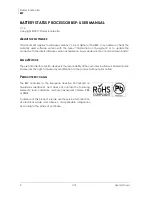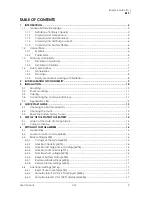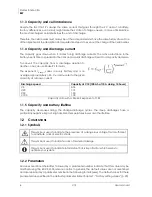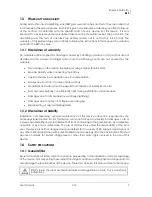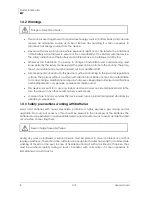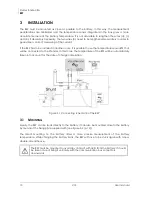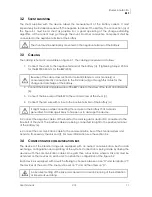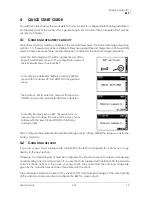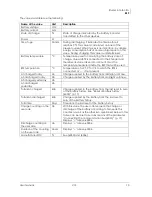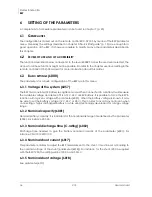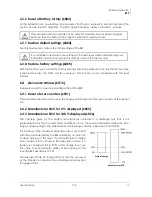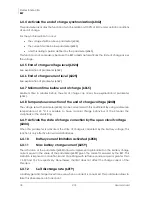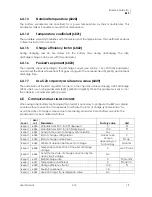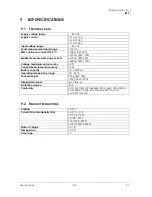
Studer Innotec SA
BSP
6
V1.3
User manual
1.1.3
Capacity and cell imbalance
Despite the fact that it’s always the same current that goes through the 2 V cells of a battery,
factory differences, even small, might make their state of charge uneven. In case of imbalance,
the most discharged cell determines the end of discharge.
Therefore, the cells in series must always be of the same model and have the same history of use. One
of the objectives of the absorption and equalization steps is to even out the charge of the cells in series.
1.1.4
Capacity and discharge current
The capacity goes down when it comes to big discharge currents. The active substance in the
battery needs time to spread into the cells and a quick discharge will lead to a capacity decrease.
To convert the capacity from a discharge duration to
another, one can use Peukert’s formula.
The exponent n
peukert
varies in every battery and is on
average approximately 1.25. C
ref
and I
ref
refer to the given
capacity at a known current.
Discharge speed
Capacity at C10 (100 Ah at 10 A during 10 hours)
C3
0.74
C20
1.19
C50
1.50
C100
1.78
Capacity ratio with a Peukert exponent of 1.25
1.1.5
Capacity and battery lifetime
The capacity decreases along the charge-discharge cycles. The deep discharges have a
particularly negative impact. High ambient temperatures lower also the lifetime.
1.2
C
ONVENTIONS
1.2.1
Symbols
This symbol is used to indicate the presence of a dangerous voltage that is sufficient
to constitute a risk of electric shock
.
This symbol is used to indicate a risk of material damage.
This symbol is used to indicate information that is important or which serves to
optimize your system.
1.2.2
Parameters
All values mentioned hereafter, followed by a parameter number indicate that this value may be
modified using the RCC-02/-03 remote control. In general, the default values are not mentioned
and are replaced by a parameter number in the following format: {xxxx}. The default values for these
parameters are specified in the defaults parameter table chapter 7: “Factory setting values” (p. 20).


